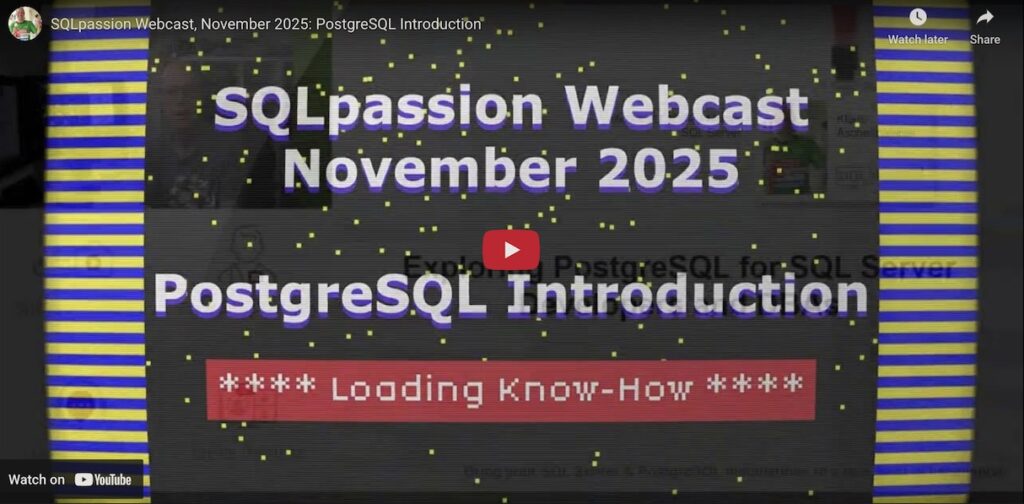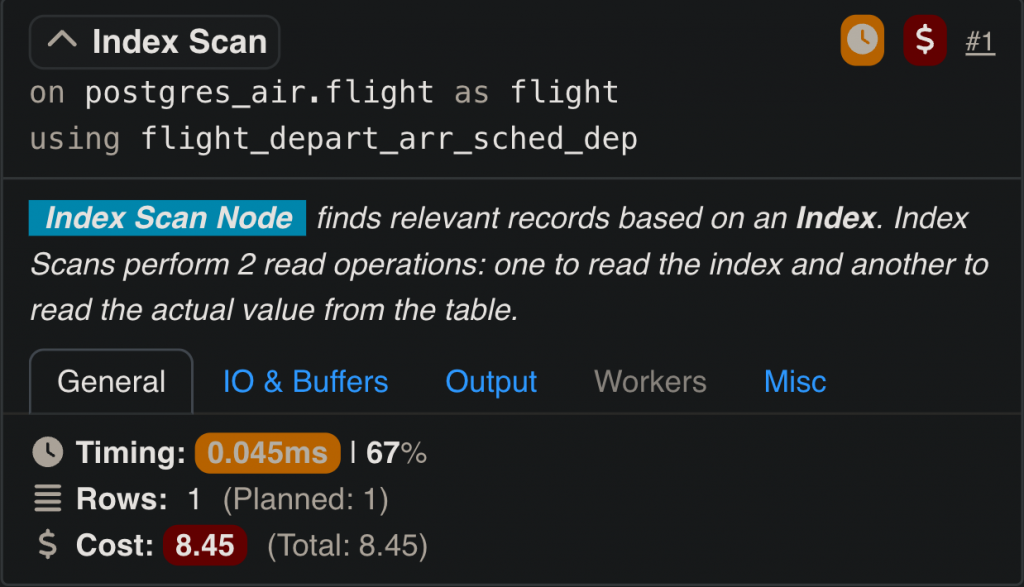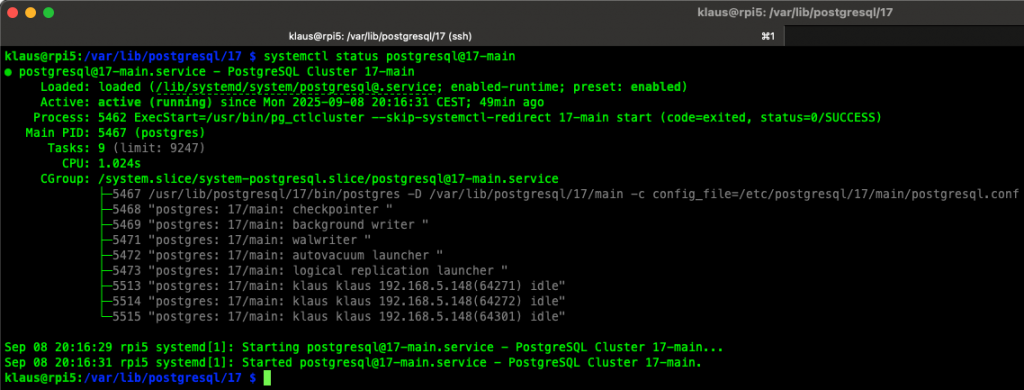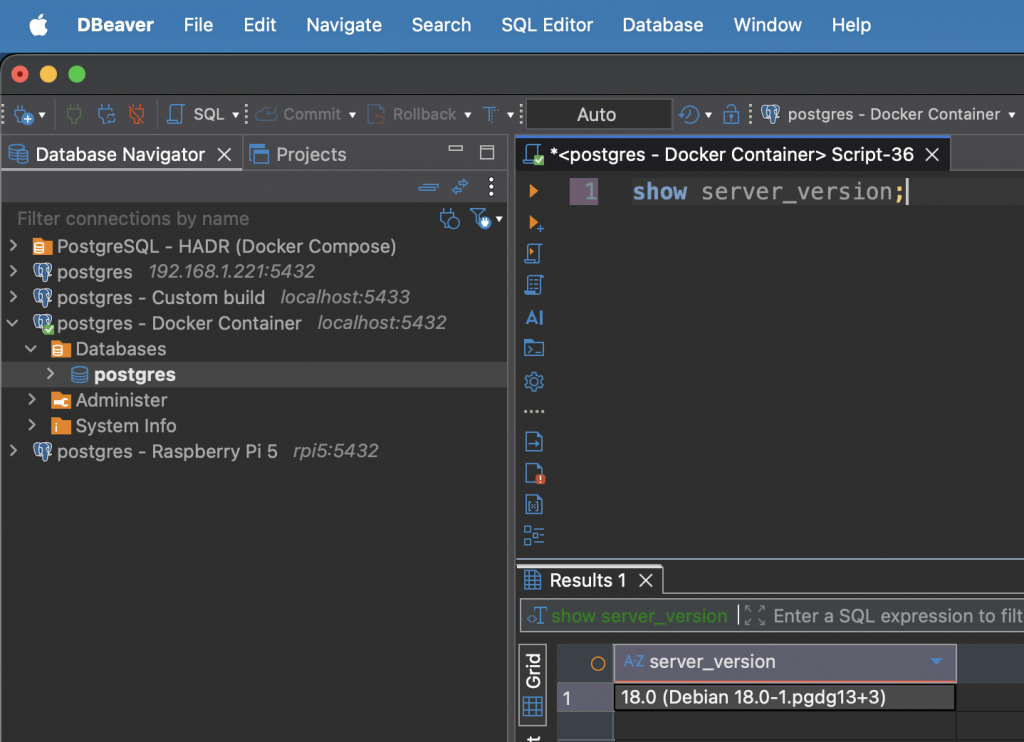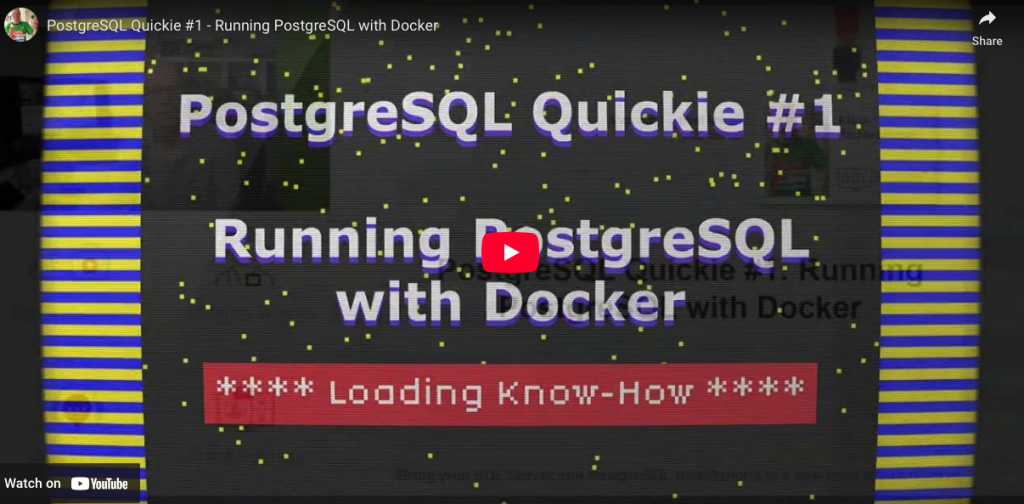New on YouTube: PostgreSQL Introduction for the SQL Server Professional
In November, I delivered a webcast titled “PostgreSQL Introduction for the SQL Server Professional” – a compact introduction to the most important architectural and conceptual differences between SQL Server and PostgreSQL. You can find here now the recorded version of the webcast: What This Webcast Covers This session is designed for SQL Server professionals who …
New on YouTube: PostgreSQL Introduction for the SQL Server Professional + read more
